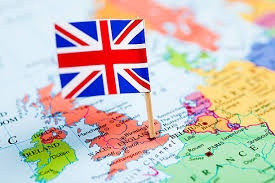Sri Lanka's Economic Crisis Explained | A Man-Made Disaster in Sri Lanka
Introduction
Sri Lanka, a picturesque island nation in South Asia known for its natural beauty and rich cultural heritage, has recently been in the headlines for all the wrong reasons. The country is facing an economic crisis of alarming proportions, often described as a "man-made disaster." In this blog, we will delve into the factors that have contributed to Sri Lanka's economic crisis, the consequences it has unleashed on its people, and what steps can be taken to address this dire situation.
1. Accumulating Debt
One of the primary drivers of Sri Lanka's economic crisis is its escalating debt burden. Over the years, the government borrowed heavily to fund infrastructure projects, including highways, ports, and airports. While these investments were expected to drive economic growth, they also accumulated significant debt, leading to a debt-to-GDP ratio that became unsustainable.
2. Currency Depreciation
Sri Lanka's currency, the Sri Lankan Rupee (LKR), has been rapidly depreciating, causing inflation to soar. The Central Bank's decision to print more money to service its debt and stabilize the currency has only exacerbated the problem. As a result, the purchasing power of the average citizen has significantly diminished, making basic necessities more expensive.
3. Import Dependency
Sri Lanka has a heavy reliance on imports, including essentials like fuel, food, and medicines. The crisis in foreign exchange reserves has led to difficulties in securing these imports, causing shortages and price hikes. The situation has left citizens struggling to access basic goods and services.
4. Political Instability
Political instability and frequent changes in leadership have hindered the government's ability to implement effective economic policies. The lack of a coherent and stable economic strategy has further eroded confidence among investors and international lenders, exacerbating the crisis.
5. Decline in Tourism
Sri Lanka's tourism sector, a significant contributor to its economy, took a severe hit due to the COVID-19 pandemic. While the pandemic was beyond the government's control, the mismanagement of the crisis and the lack of a clear strategy to revive tourism have prolonged the economic downturn.
6. Imbalanced Trade Relations
Sri Lanka's close economic ties with certain countries, particularly China, have raised concerns about debt dependency. Infrastructure projects funded by Chinese loans have left Sri Lanka in a vulnerable position, with limited leverage to negotiate favorable terms and repayment schedules.
Consequences of the Crisis
The economic crisis in Sri Lanka has had dire consequences for its citizens. Skyrocketing inflation has eroded savings and made it increasingly challenging for families to make ends meet. Essential items such as fuel, food, and medicines are in short supply, causing widespread suffering. Unemployment rates have surged, further deepening the economic woes.
Addressing the Crisis
Addressing Sri Lanka's economic crisis requires a multifaceted approach:
1. Debt Restructuring: Sri Lanka should work with international institutions to restructure its debt, negotiate favorable terms, and develop a sustainable repayment plan.
2. Economic Reform: The government must implement comprehensive economic reforms, including fiscal discipline, improved governance, and transparency.
3. Diversification: Sri Lanka should diversify its sources of income beyond tourism and explore opportunities in technology, agriculture, and other sectors.
4. Investor Confidence: Restoring investor confidence is crucial. This requires political stability, clear economic policies, and efforts to attract foreign investment.
5. Addressing Inflation: The Central Bank must adopt measures to stabilize the currency and control inflation to ease the burden on citizens.
Conclusion
Sri Lanka's economic crisis is indeed a man-made disaster, stemming from a combination of fiscal mismanagement, political instability, and unsustainable debt. The consequences have been felt by its citizens, who are struggling with soaring prices, shortages, and job losses. Addressing the crisis will require concerted efforts, reforms, and international cooperation. With the right strategies and leadership, Sri Lanka can navigate its way out of this dire economic situation and work towards a more stable and prosperous future.









Comments
Post a Comment